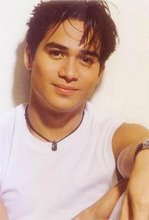Judges in these events also look at the contact that the riders have with their horses; dressage horses should not pull the hands of the rider and the reins should be held evenly - in other words, the horse should be able to come up into the bridle and should be carried forward in a natural motion.
Just as the pull of the dressage horse is measured, so is its push - the thrusting power that propels a horse forward with correct muscle and joint use. Part of the horse's push is measured in the straightness of the dressage horses gait, the horse's ability to move forward with its hind legs following the same path as its front legs.
If you are looking to acquire a dressage horse for future competition, you will want to consider the abilities and traits of the person for whom the horse is intended. While the judges critique dressage horses in competition more than the rider, it is equally important for the rider to be able to guide the horse and to lead it through the judged events. If you are naturally uneasy atop a horse, then you will want to find a horse that is very intuitive and calm. If you were really tall and lanky, you would not want to get a shorter horse, no matter how successful the horse has been in previous competitions.

No comments:
Post a Comment